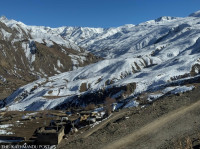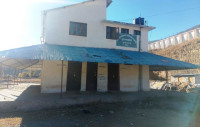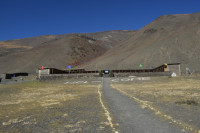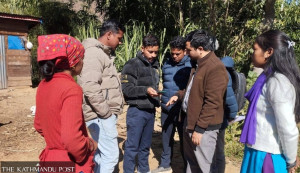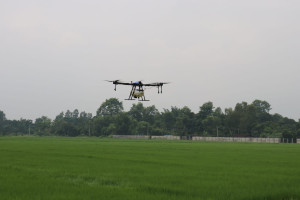Karnali Province
Deforestation goes unchecked in several pine forests of Jajarkot
Community groups cutting down trees on the pretext of managing old and fallen trees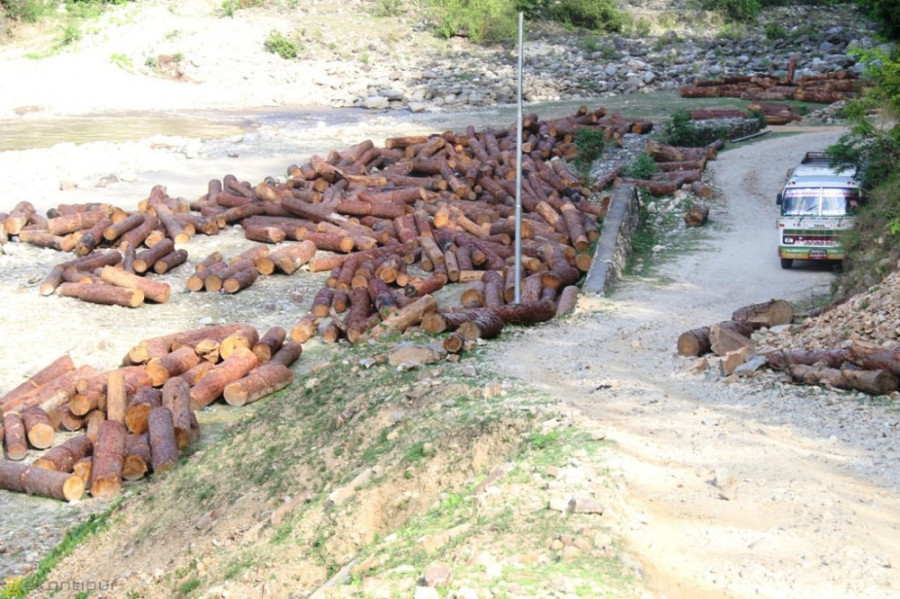
Bhim Bahadur Singh
Unauthorised felling of pine trees is going unchecked in community forests in Jajarkot district, especially in community forests where the scientific forest management programme—introduced and endorsed by the federal and provincial governments in the current fiscal year—have been implemented.
According to Dal Singh Oli of Shivalaya-1, deforestation in pine forests is quite rampant in community forests of Bheri and Chhedagadh municipalities and Shivalaya as well as Kushe rural municipalities. Oli said, “The pine trees are being cut down in collusion with the community forest users’ groups, the very groups that are supposed to protect the forest cover, and timber traders in the name of scientific management of forest.”
The federal and provincial governments provided Rs1 million—Rs 500, 000 each by both executives—to each community forest with the aim to protect community forests by taking conservation initiatives like afforestation, fencing, making fire lines, soil conservation, and minimising grazing, encroachment of forest lands and smuggling of timber. There are 274 community forests in the district.
However, it has been learnt that rather than working towards forest conservation, the users’ group is actively engaging in deforestation activities.
The scientific forest management programme is being implemented in Chhaharikhola Community Forest and Chuli Dharmila Community Forest in Shivalaya, Chame Patal Community Forest and Kutila Community Forest in Chhedagad in the district.
Gyani Prasad Sharma, deputy chief of the District Coordination Committee in Jajarkot, said deforestation is rampant in 22 community forests in the district. “The pine trees are being cut down on the pretext of managing ‘old and fallen trees’, especially in the community forests where scientific forest management programme has been implemented,” he said.
According to him, more than 150 pine trees have been cut down in each community forest. “Thousands of pine logs are heaped on the roadside. Even young and strong pine trees are being cut down by the forest consumer group,” Sharma noted, adding that the community forest had even cut down green trees claiming that they “fell” naturally.
Mahesh Kumai, officer at the Division Forest Office in Jajarkot, admitted that the community forests are losing trees not because of illegal activities but because they need to “manage fallen trees”.
“We are losing pine trees to haphazard construction of roads by using heavy bulldozers and frequent outbreak of wildfires,” Kumai said.
However, he agreed that some community forests are taking advantage of legal loopholes and users’ groups are cutting down trees without a scientific need for it.
“A community forest is allowed to cut down up to 100 fallen trees in a year as per the work plan of the community forest management. Many users’ groups have found a way around cutting down healthy pine trees because of this provision,” said Kumai, while assuring that the forest office will take strong action against anyone found felling trees illegally.
Additionally, illegal resin collection has also hampered forest conservation efforts in the district.
Conservationists said thousands of trees have dried up in 96 community forests in the district. Nine different companies including Bangalamukhi Resin and Turpentine of Banke, Swostik Resin and Turpentine of Kapilvastu, Deuti Resin and Turpentine of Banke, Mount Resin and Turpentine of Rupandehi, Mankamana Resin and Turpentine of Banke, Dipmala Resin and Turpentine of Banke, Bageshwori Resin of Banke and Global Chemicals Pvt Ltd of Kailali have been collecting the resin in the district for the past 16 years.
“Although more than nine companies have the legal right to collect resin from the community pine forests, some of them collect more than the allowed quantity,” said Oli.
Speaking to the Post about the illegal collection of resins in the pine forests, Kumai said, “Yes, some companies collect more than what they are legally allowed. But the authorities concerned like the division forest office have failed to monitor resin collection or take action against the guilty.”




 13.12°C Kathmandu
13.12°C Kathmandu



